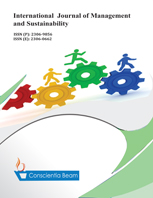The Role of the Gestalt Theory in Understanding Persian Architectural Masterpieces, Case Study: Fin-Garden of Kashan
DOI:
https://doi.org/10.18488/journal.11/2013.2.1/11.2.1.13Abstract
Gestalt theory is one of the most effecting theories. This theory has been used in different fields but until now it is not used about Iranian architecture. Absence of researches about Iranian architecture according to gestalt theory, making analysis shows more up. So present research meantime of explaining gestalt theory and it’s connection with landscape architect means proceed to gestalt theory in this field. The fundamental research questions are: What concepts can be explained according to gestalt? does we able to analyze the historical gardens via this theory? What dimensions will be emphasized more based on gestalt theory about analysis of historical garden? What are the advantages and disadvantages of this theory? To answer these questions, in field theory the research methodology: ”logical reasoning” and in field analysis samples; the research methodology “the diffusion of using combination strategies” are used. After reviewing gestalt theory and expressing the theoretical concepts, concepts related to this theory, in a sample like “Fin-Garden” in Kashan is putting to the analysis. Studies show that, although many years have passed from gestalt theory, they are useful and can be used for landscape architecture and it can unclear aspects of Iranian landscape architecture and putting on recognition.

